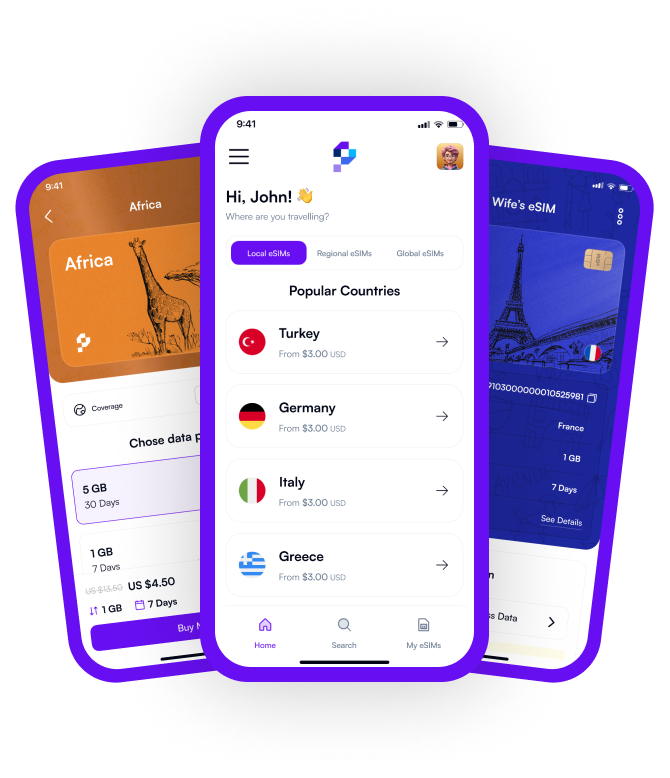Dual SIM devices allow users to use two phone numbers simultaneously on a single device. This feature is helpful for separating work and personal life, as well as for easily managing both local and international numbers during travel.
In addition to physical SIM cards, E-SIM technology has brought flexibility in communication. E-SIM enables digital line activation without the need for a physical card. Combining the dual SIM card slot with the E-SIM option enhances the user-friendliness of phones.
Differences Between Physical SIM Cards and E-SIM
There are two options to connect mobile devices to mobile networks: physical SIM cards and E-SIMs. Physical SIM cards are plastic cards containing a small chip and have been used for years.
These cards are inserted into a dedicated slot in your phone and store essential data such as your phone number and operator information. If you want to update your information, you’ll need to replace the physical SIM card.
E-SIMs (electronic SIMs), on the other hand, do not require physical SIM cards. They are embedded directly into your device and are digital. With an E-SIM-enabled phone, you can activate a new plan digitally without the hassle of physically changing a card when switching mobile providers.
This approach provides users with more flexibility and convenience, and it also allows devices to be thinner and lighter since there’s no need for an extra SIM slot. Thanks to these fundamental differences between physical SIM cards and E-SIMs, users can choose the most suitable connectivity method for their needs.
The Rise of E-SIM and Its Impact on the Mobile World
The development of E-SIM technology is leading to significant changes in the mobile communication industry. E-SIMs, which render traditional SIM cards obsolete, operate as embedded profiles within devices, thereby significantly enhancing the user experience.
With this digital transformation, users can now quickly and easily switch their mobile operators over the internet. This eliminates the need to visit a physical store or wait for a new SIM card.
The impact of E-SIM in the mobile arena goes beyond user convenience. Since there’s no need for an extra SIM card slot, device manufacturers can create thinner and lighter designs.
E-SIM technology allows Internet of Things (IoT) devices such as smartwatches and fitness trackers to connect to mobile networks without requiring a smartphone. As a result, these devices become more independent.
The advantages offered by E-SIM make it a competitor in the future of communication technology. E-SIM has the potential to play a significant role in the improvement of mobile devices and user communication experiences.
Advantages of Dual SIM and E-SIM Combination
The combination of dual SIM and E-SIM offers phone users the best communication options. This combination preserves the advantages of reliable physical SIM cards while also providing the digital convenience and flexibility offered by E-SIM.
With the dual SIM feature, users can use two different phone numbers simultaneously on a single device. This feature is exceptionally useful for separating work and personal life, taking advantage of different network providers, and easily managing local and international lines during overseas travel.
E-SIM technology allows users to switch mobile operators easily. It provides a quick transition without the hassle of obtaining a new physical SIM card. This is advantageous for frequent travelers and those who want to try different mobile operators because they can use different carriers without the hassle of physically changing a physical SIM card.
The combined use of dual SIM and E-SIM allows device designers to create thinner and lighter designs. This means more options and flexibility for users. This technological innovation is shaping the future of mobile communication and significantly enhancing user experiences.

